It may not sound familiar to you because it is not one of the classic films that come to mind when we talk about the war genre. But whoever has seen Hell to eternity He must have thought that his plot was nothing more than another fantasy about American exploits in World War II:a soldier who single-handedly captured more than a thousand Japanese? He sounds exaggerated, certainly. However, it is based on an unheard-of real event that a Hispanic marine named Guy Gabaldon starred in Saipan.
In the film he is played by Jeffrey Hunter (famous for his role as the companion of his uncle Ethan Edwards, or John Wayne, in Centaurs of the desert and, above all, for incarnating Jesus Christ inKing of kings ); certainly he resembled her. The director, Phil Karlson, a craftsman who never stood out, was always proud of Hell to eternity because he wanted to tell the story of the nisei , American citizens of Japanese descent who during the war were confined in concentration camps to prevent a fifth column; We already dealt with that episode in an article.
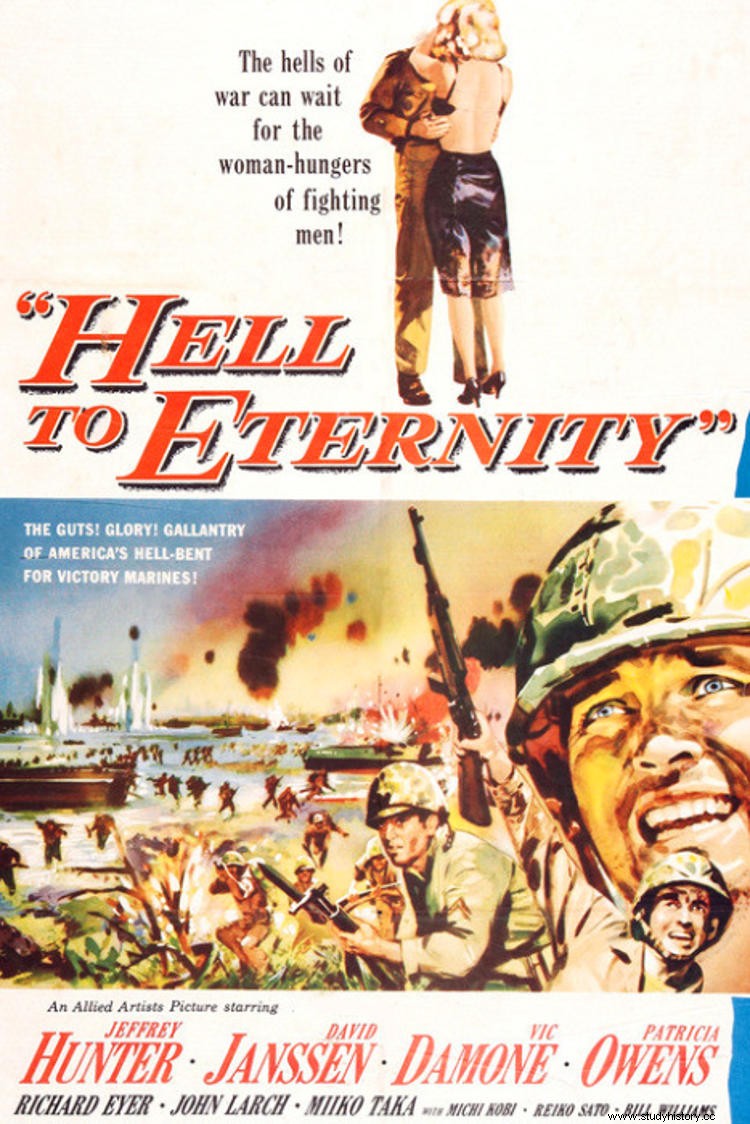
Karlson only partially succeeded because the production company preferred to focus the plot on the protagonist's military stage. The theme of the nisei it was not free. Gabaldon was born in 1926 in Los Angeles, a multi-ethnic city where many of them resided, as well as quite a few Hispanics. In fact, he was the son of some Mexican immigrants, very humble people who dedicated themselves to a trade that is extinct today, shoe shiners, and who also had to support six other brothers. However, Gabaldon had a second family that he adopted before puberty after his parents died in a short period of time:the Nakano. As can be deduced from the surname, it was nisei .
His son Tsutomo was only a year older than Guy and they had become friends when they were part of a street gang called the Moe Gang , fruit of that carefree extra-domestic freedom that was given to children in other times. Tsutomo would become an actor adopting the name of Lane Nakano and would be the one who mediated to bring his friend's adventure to the cinema. But, above all, thanks to the Nakano, Guy not only learned everything related to Japanese culture and way of life but also their language. At that time he must not have imagined how useful this knowledge would be in the future. Nor that the good times were over because the dark shadow of war was already hanging over the world.
It broke out in September 1939, but the US did not officially enter the conflict until President Roosevelt's declaration to the nation on December 8, 1941, after the attack on his Pearl Harbor base. Two and a half months later, the War Department ordered the internment of the nearly 120,000 nisei that were in the country, spreading them over dozens of fields that essentially dotted the west coast. The operation, which was completed in just two weeks, had clear racist and revenge overtones, since other suspect immigrants, such as Germans and Italians, did not have to go through the same thing.
Together with some 11,000 Nisei Furthermore, the Nakanos were admitted to the Heart Mountain Relocation Center in Wyoming and Guy Gabaldon, who was then sixteen years old, had to make a living working in a canning factory in Alaska. He remained there until March 1943, when he was old enough to enlist in the Marines, being trained at the newly created base at Camp Pendleton, San Diego, California. Given his experience with the nisei , he was sent to complete his training at the Enlisted Marine Japanese Language School and was eventually assigned to the 2nd Regiment Headquarters and Service Company, attached to the 2nd Marine Division, as a scout and observer.
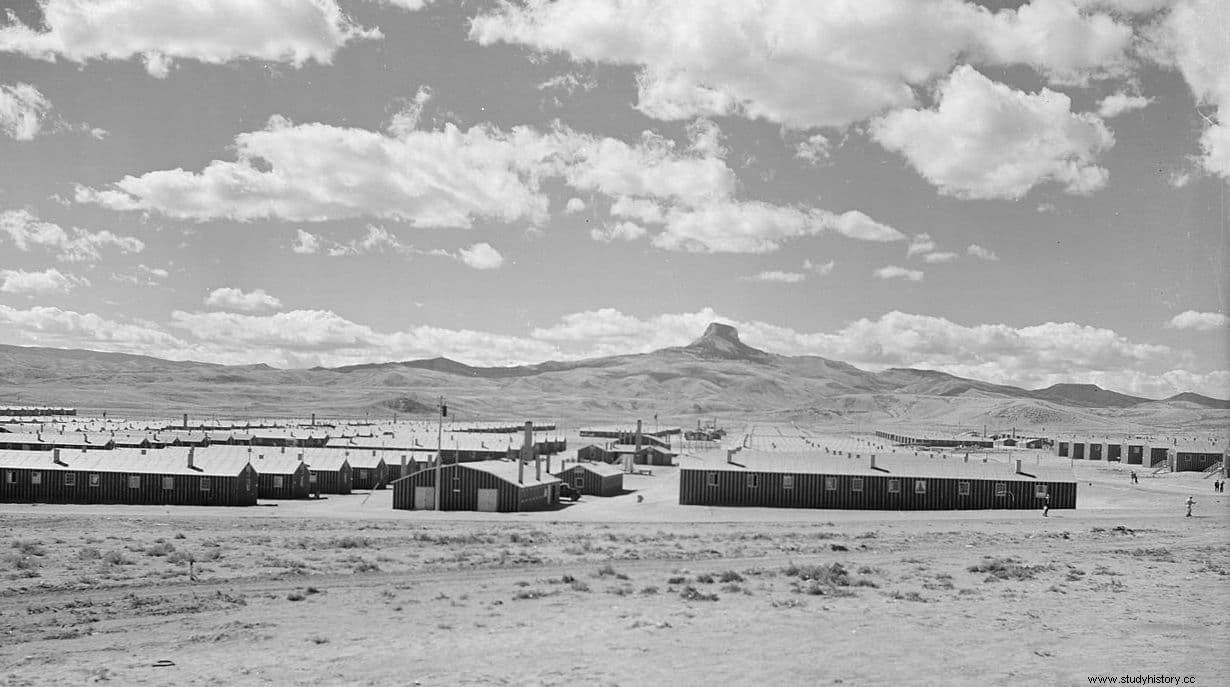
By then the tide of the war had changed. The unstoppable Japanese expansion across the Pacific, which had engulfed the Philippines, Thailand, Malaysia, Singapore, Borneo, Burma, the Dutch East Indies, Hong Kong and part of China, was stopped in the spring-summer of 1942 in two major decisive battles, those of the Coral Sea and Midway, from which Japan progressively weakened and the US went on the counterattack.
It became clear that August with the conquest of Guadalcanal, in which the enormous number of casualties dissuaded the Americans from attempting an immediate invasion of the Japanese archipelago. A preliminary phase of intense bombardment was considered necessary to demolish both the defenses and the indomitable fighting spirit of the enemy, and for this it was necessary to build a network of island airfields in the vicinity.
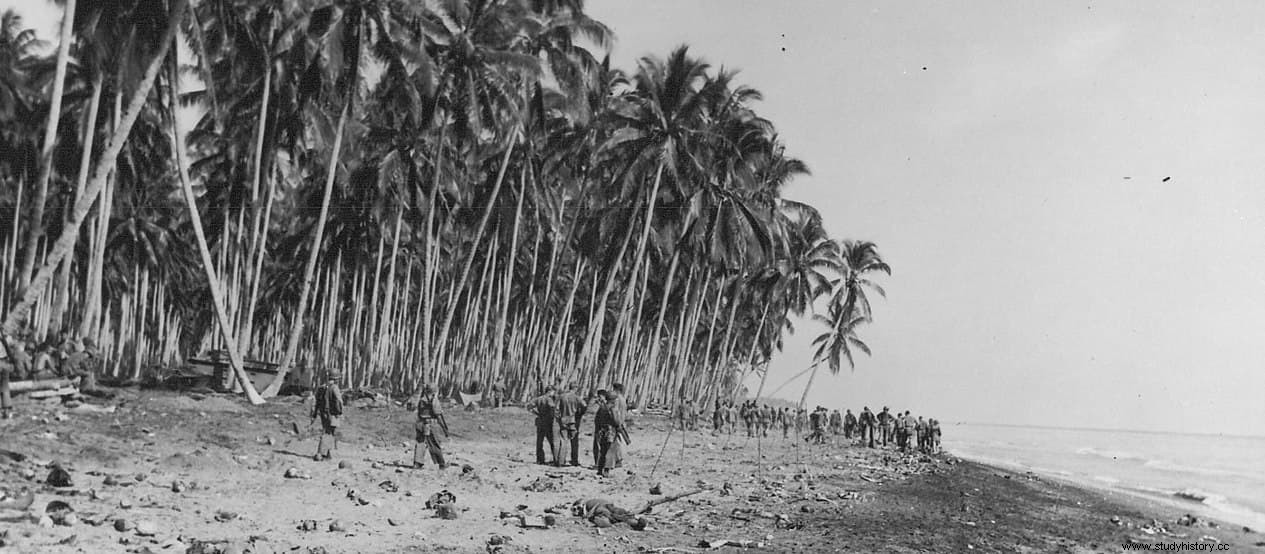
One of them was to be located on Saipan, the largest of the Mariana Islands after Guam, and would be destined to house the brand new B-29 Superfortress heavy bombers. , the same type of aircraft that would later drop the atomic bombs on Hiroshima and Nagasaki. The capture of Saipan was not going to be easy because the Japanese considered it part of their last line of defense and garrisoned it accordingly with numerous coastal batteries, underground fortifications and close to thirty thousand soldiers.
Indeed, the marine and infantry troops that landed on its beaches on June 15, 1944 met with tenacious resistance, which took three weeks of fighting to overcome plus the human cost of 2,462 dead and 10,364 wounded, due to the order of the halt Japanese command that for every fallen soldier seven enemies had to be killed.
However, the Japanese casualty figures were shocking because, following their habit of not surrendering, practically all the defenders fell, to which another 20,000 civilians had to be added. Only 931 soldiers who were taken prisoner were saved and Guy Gabaldon had an enormous responsibility for this, impressed with that massacre.
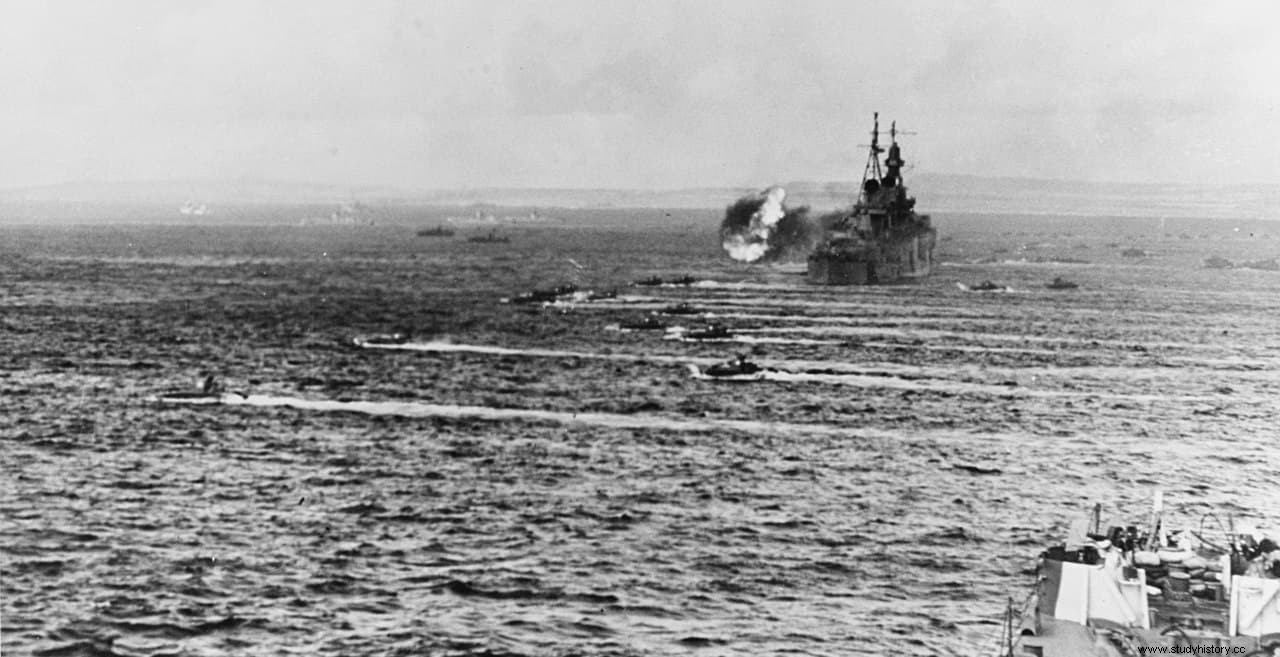
And it is that his 2nd Marine Division was, together with the 4th, in charge of conquering Saipan. Now, Guy worked a bit on his own and he himself said that the first night on the island he decided to go exploring and returned with two prisoners. The next time he repeated successfully, ignoring his superiors' threats to prosecute him if he left the lines without permission again; there he worked as a team, they told him. But it is that when he carried out a third exit and appeared with fifty Japanese arms raised, there was no choice but to recognize that the Marines had found a new and unusual weapon, humane and bloodless, that could save them from losing more people.
Gabaldon took advantage of his command of the Japanese language to approach the enemy's positions and convince him to surrender, promising him good treatment. Furthermore, he let one of them return so that he could communicate to his officer an offer to capitulate under dignified conditions. To everyone's surprise, the officer showed up soon after and accepted the deal, surrendering with the entire garrison, hundreds of gaunt soldiers and civilians marching in single file earning Gabaldon the nickname Pied Piper of Saipan .
The loss of the island was a blow to Prime Minister Hideki Tōjō, who resigned along with his entire government, being replaced by the elderly General Kuniaki Koiso, because the Americans now had an air base less than 2,100 kilometers from the island. Japan from which their planes could easily attack the country.
Meanwhile, Gabaldon passed to the neighboring island of Tinian, six kilometers to the south, where another battle was fought between July 24 and August 1. As in Saipan and other places, the defenders hid during the day to fight at night and thus alleviate their material and weapons disadvantage. Gabaldon continued to take prisoners there with his technical staff, although most of the Japanese did not surrender until the end of the war (the last one even waited until 1953).
In fact, there were also isolated resistance fighters on Saipan and it was one of them who fired a burst of machine gun fire at the marine when he had returned to the island to try to convince them. Seriously wounded, he was evacuated and missed the rest of the fight. He was honorably discharged and his commander proposed him for the Medal of Honor, the highest decoration of the US Army (which is personally awarded by the president on behalf of Congress). Understandably, they were not awarded it, even though the legendary Sergeant Alvin York had won it in World War I for taking ten times fewer prisoners than Gabaldon.
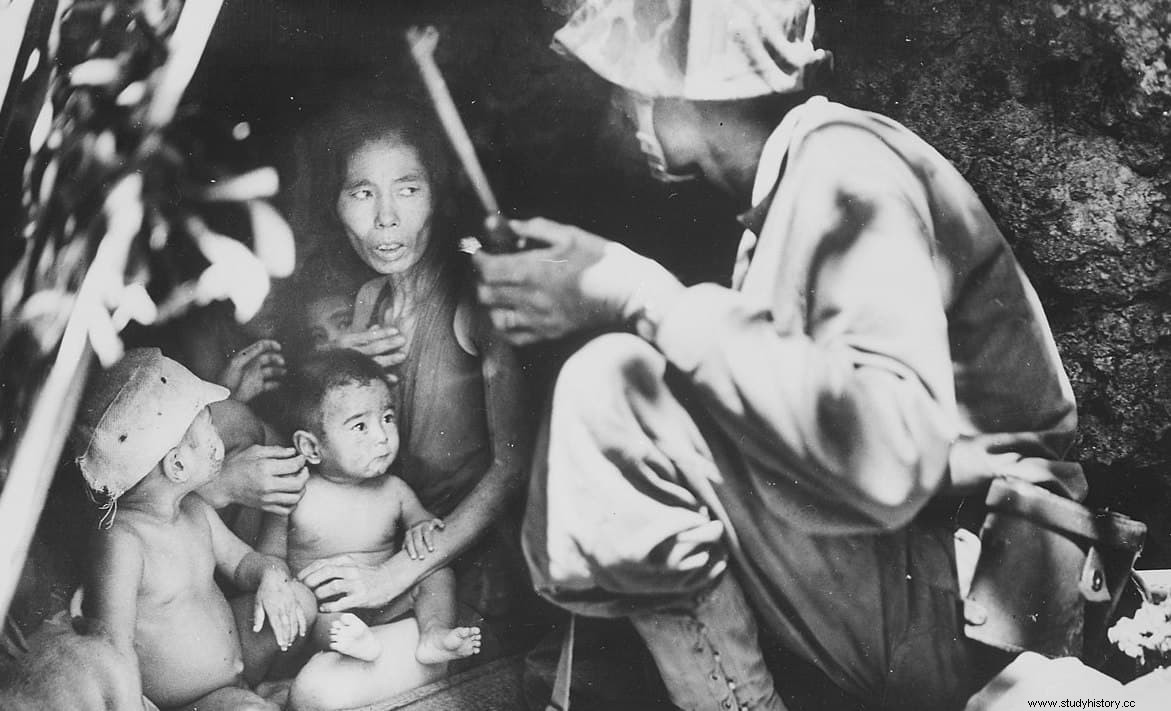
According to a subsequent investigation by the intelligence services, the marine captured nearly a thousand and a half adversaries; among them there were not only military but also civilians but it was still an amazing number. In any case, Gabaldon did not leave empty handed because he was awarded the Silver Star, which is awarded for heroic courage shown against the enemy. In 1960, it was replaced with the higher-ranking Navy Cross after his story was publicly reported on a popular television show, This is your life .
That sudden popularity was what materialized the idea of the film reviewed above, shot that same year, for which two very fashionable actors were hired, David Janssen and the aforementioned Jeffrey Hunter. It even served as a springboard for Guy to run for Congress for the Republican Party in 1964, albeit without success.
As a curiosity, it should be said that his second wife, with whom he had six sons and three daughters, was nisei . Together with her he lived two decades in Saipan, although he died in Florida in 2006, being buried in Arlington National Cemetery. A month earlier, the Los Angeles City Council had sent a request to the White House to exchange the Navy Medal for the Medal of Honor.
